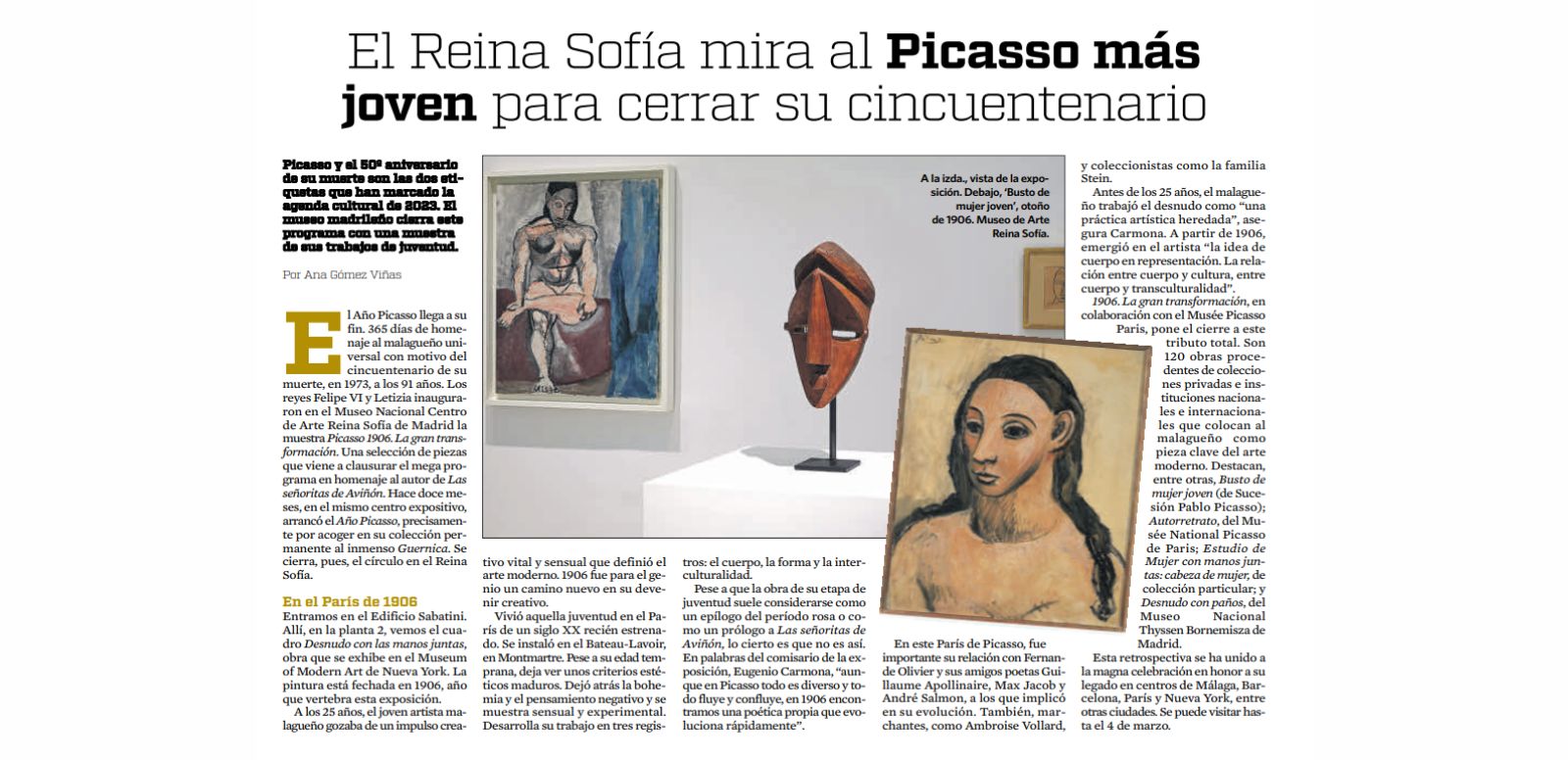
The Year of Picasso comes to an end. 365 days of homage to the universal Malaga-born artist on the occasion of the 50th anniversary of his death, in 1973, at the age of 91. King Felipe VI and Queen Letizia inaugurated at the Museo Nacional Centro de Arte Reina Sofía in Madrid the exhibition Picasso 1906. The Great Transformation. A selection of pieces that comes to close the mega program in tribute to the author of The Young Ladies of Avignon. Twelve months ago, the same exhibition center kicked off the Picasso Year, precisely for hosting the immense Guernica in its permanent collection. The circle is thus closed at the Reina Sofia.
In Paris in 1906
We enter the Sabatini Building. There, on the second floor, we see the painting Nude with joined hands, a work that is exhibited at the Museum of Modern Art in New York. The painting is dated 1906, the year that forms the backbone of this exhibition. At the age of 25, the young artist from Malaga was enjoying a vital and sensual creative impulse that defined modern art. 1906 was for the genius a new path in his creative evolution. He lived that youth in the Paris of a new twentieth century.
He settled in the Bateau-Lavoir, in Montmartre. Despite his young age, he reveals mature aesthetic criteria. He left behind bohemian and negative thinking and shows himself sensual and experimental. He develops his work in three registers: body, form and interculturality. Despite the fact that the work of his youthful period is usually considered as an epilogue to the pink period or as a prologue to Les Demoiselles d'Avignon, the truth is that this is not the case. In the words of the curator of the exhibition, Eugenio Carmona, "although in Picasso everything is diverse and everything flows and converges, in 1906 we find a poetics of his own that evolves rapidly".
In this Paris of Picasso, his relationship with Fernande Olivier and his poet friends Guillaume Apollinaire, Max Jacob and André Salmon, whom he involved in his evolution, was important. Also, dealers, such as Ambroise Vollard, and collectors like the Stein family.
Before the age of 25, the Malaga-born artist worked with the nude as "an inherited artistic practice," says Carmona. From 1906 onwards, "the idea of the body in representation emerged in the artist. The relationship between body and culture, between body and transculturality". 1906. The great transformation, in collaboration with the Musée Picasso Paris, closes this total tribute. There are 120 works from private collections and national and international institutions that place the Malaga-born artist as a key piece of modern art. Highlights include, among others, Bust of a Young Woman (from the Pablo Picasso Estate); Self-Portrait, from the Musée National Picasso in Paris; Study of a Woman with Joined Hands: Woman's Head, from a private collection; and Nude with Cloths, from the Museo Nacional Thyssen Bornemisza in Madrid. This retrospective has joined the great celebration in honor of his legacy in centers in Malaga, Barcelona, Paris and New York, among other cities. It can be visited until March 4.

